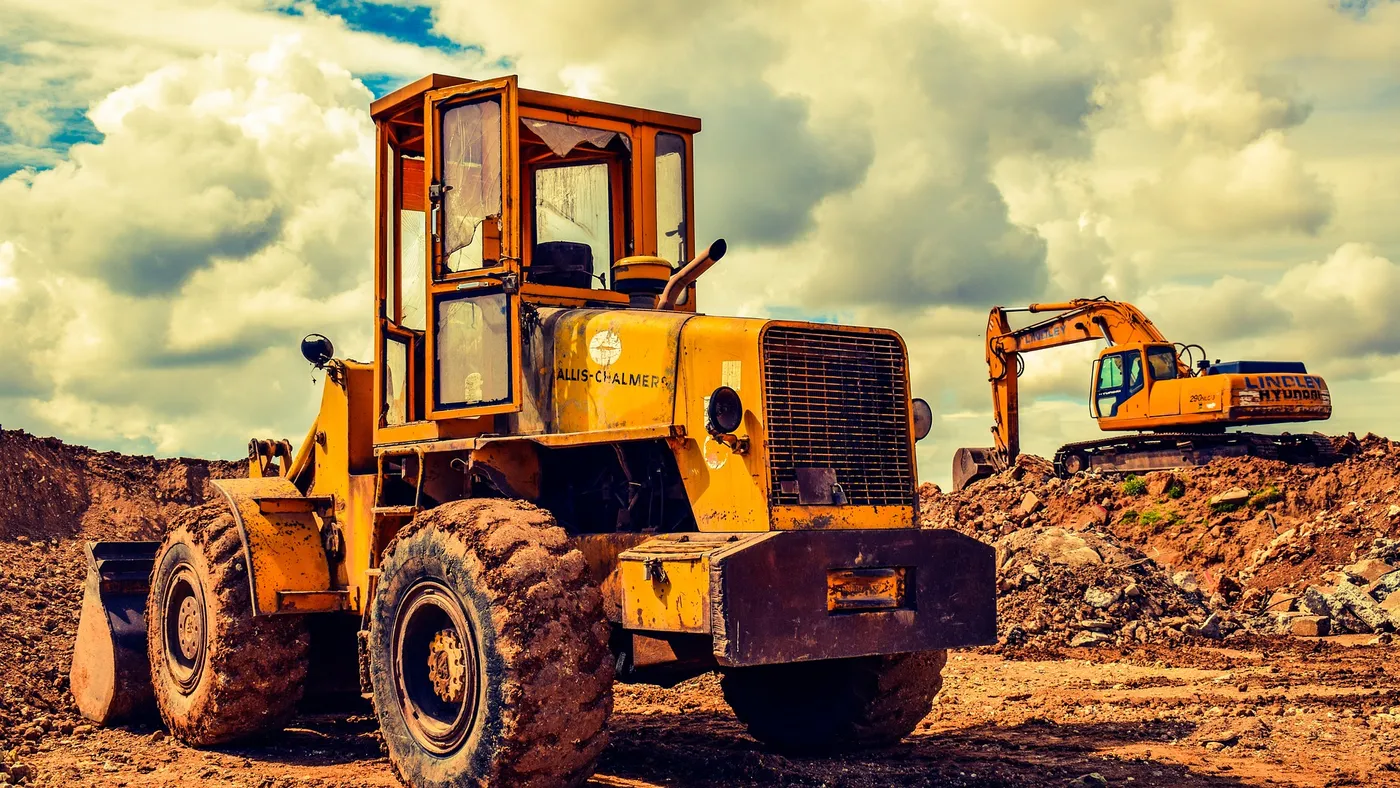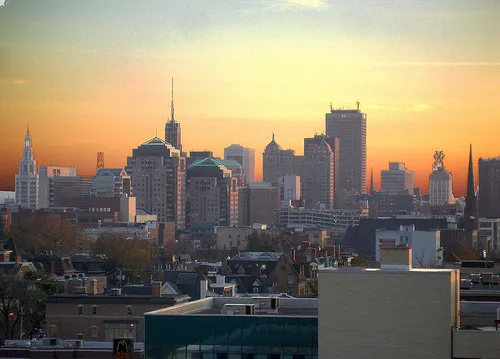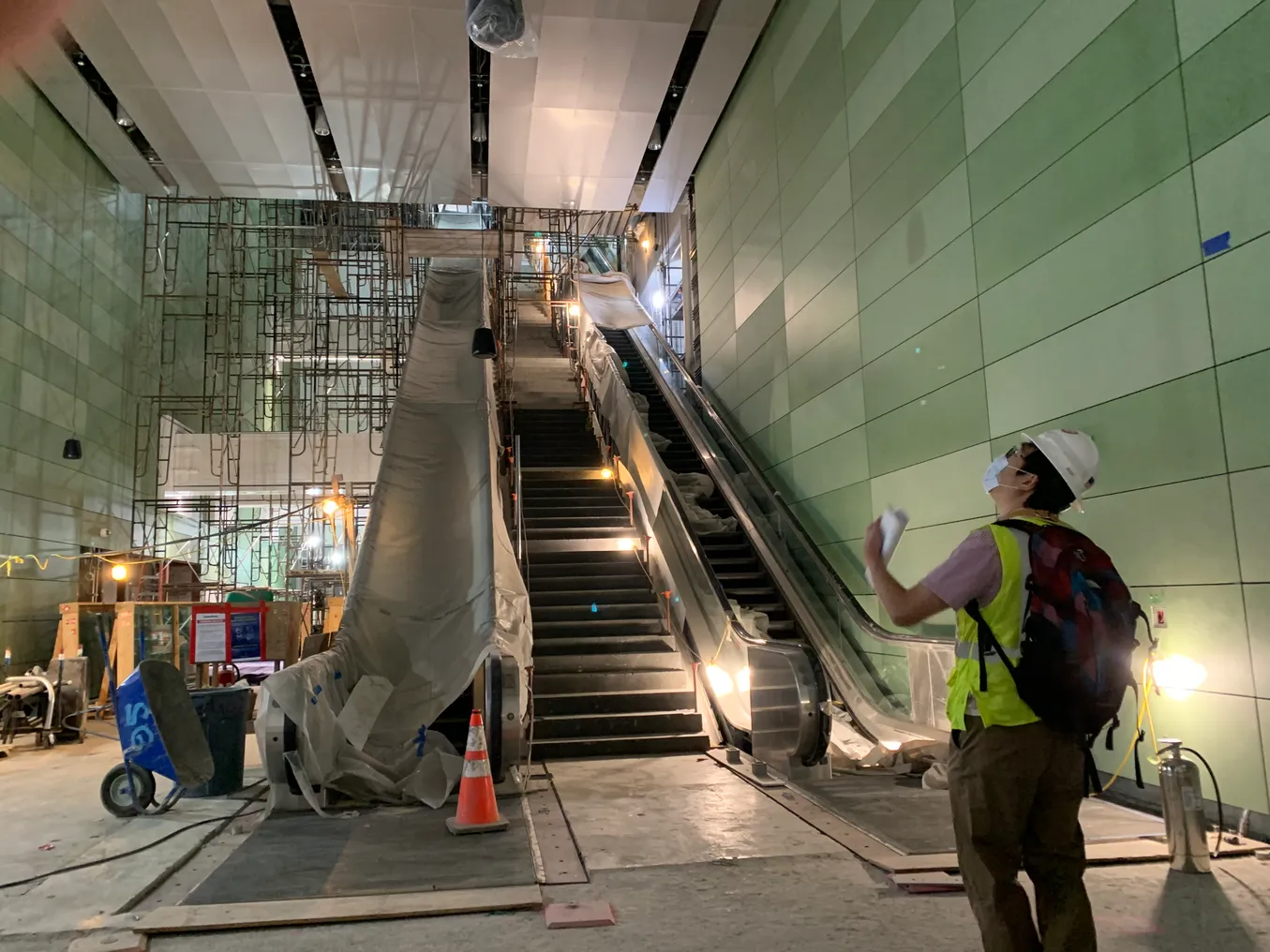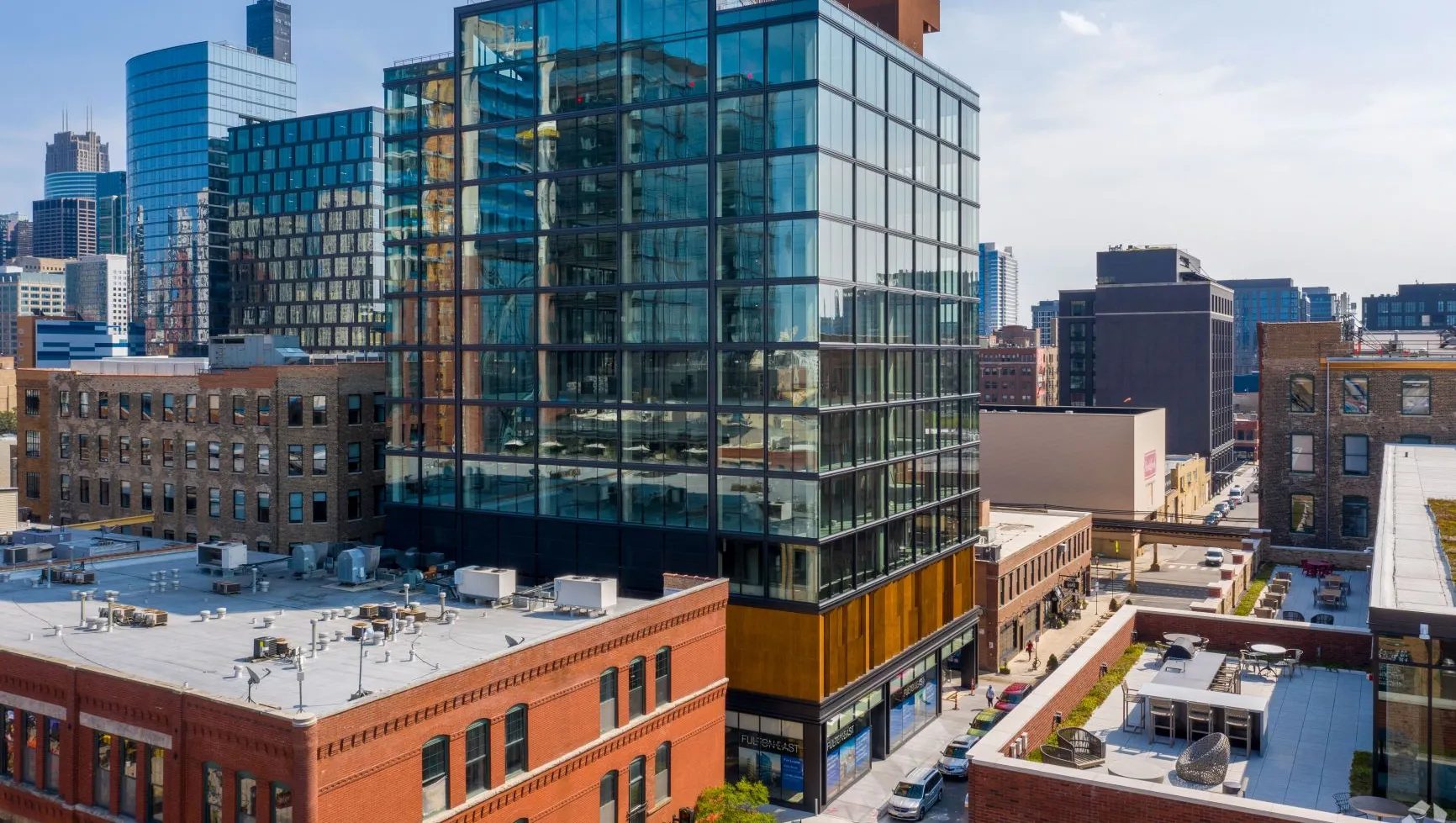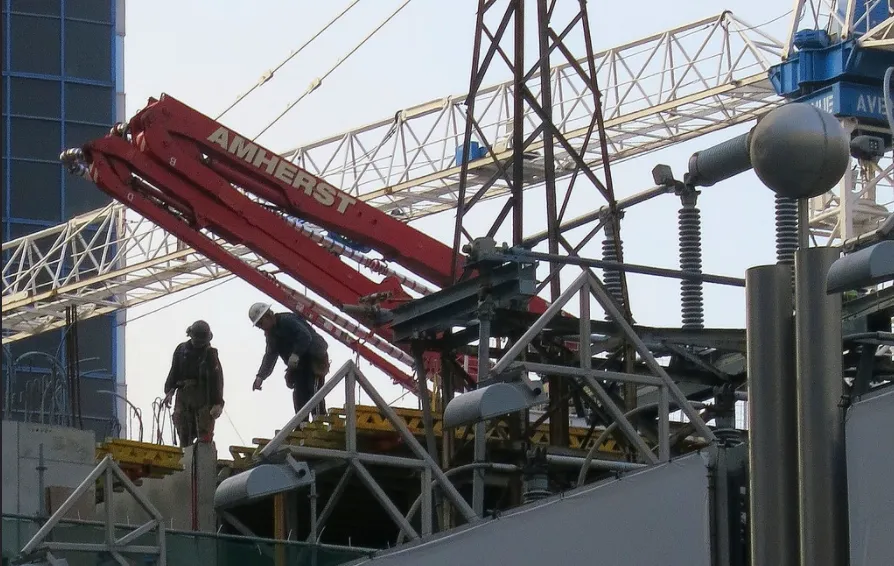
2021 outlook: 6 trends that will influence construction this year
Here's some perspective to ring in the new year: “2020 bad, 2021 good.”
That’s the takeaway from construction observers looking ahead at the turn of the year, even as the bleakness of the pandemic surge and record deaths in the U.S. continue to weigh on their minds.
“My expectation is that the U.S. economy will shrink between 4% and 5% in 2020,” said Anirban Basu, chief economist at the Associated Builders and Contractors during a year-end webinar, where he also made the good-bad prognostication quoted above. “But we’re going to come back hard in 2021.”
There are reasons for hope, such as a second coronavirus vaccine being authorized for emergency use and shipped in recent weeks and the $900 billion relief package recently signed by President Trump. But the drivers of optimism among those who track construction are also more specific to the space, while encompassing fundamental shifts in markets and processes that will lead to more broad-based development activity in 2021.
Just listen to Tom Stringer, managing director for site selection and business incentives at professional services firm BDO, whose job is to find suitable development sites for corporate clients who want to build new facilities and offices.
“Site selection tends to be a leading indicator in the economy that businesses are starting to think about capital investments, and our phones have been ringing,” Stringer said. “So if your readers are the folks on the contracting side, well, they’re about to get busy, too.”
Stringer isn’t alone. According to a post-election survey of engineering and construction executives conducted by Deloitte, 68% of respondents characterized the business outlook for the industry as somewhat or very positive.
“We do see pent-up demand sitting out there as we end out 2020 and come into 2021,” said Michelle Meisels, Deloitte’s engineering and construction practice leader.
That widespread optimism among construction executives is grounded in the reality of several factors – some positive, some less so – that are poised to shape construction in 2021. Here are six of the top factors that will influence the industry in the new year:
Subs on the skids
The coming months and beyond could be particularly hard on subcontractors, and the contractors who will need them once projects pick up again.
“The market is just getting much more competitive for subcontractors, and therefore, sadly, some will go out of business, especially the smaller guys,” Meisels said. “General contractors may need to self-perform a lot of work they would normally sub out, and build those capabilities in house.”
That’s the road Michael Bordes, president of New York City general contractor AA Jedson Company, is already on.
He said during the pandemic, he’s had to pivot from the restaurants and gyms he built previously to focus on affordable housing projects that were still considered essential. But he’s also flipping the script and limiting his risk from subs by handling more work in house.
“We’re self-performing most of the construction tasks ourselves because the subcontractors that are out there are having a very hard time,” said Bordes, noting that affording insurance is one issue subs are struggling with. “The people we’re dealing with may not be transparent about saying we're having trouble with assurances or we're short on labor. If you keep it on your payroll, you at least have 95% control.”
Staying safe
Meanwhile, Bordes said he’s focused on keeping his workers safe and healthy by combating complacency and continually reinforcing mitigation strategies, which has become more challenging as the pandemic has worn on. And while he hopes his workers will sign up to get the vaccine, he says he’s not planning to force them to do so if they have reservations about taking it.
“We know masks work. We know sanitizing on a regular basis, washing your hands and not touching your face works to not get this disease,” Bordes said. “But while we would suggest to employees that it’s important to get the vaccine, we don’t feel we can force them. Some are still cautious about what the side effects might be in the future.”
While the Equal Opportunity Employment Commission, as well as a panel of construction lawyers, recently determined that employers could require workers to be vaccinated with certain exceptions, the implications of forcing workers who object to get inoculated over potential safety concerns is sure to be a challenge for contractors in 2021.
Hiring for the surge to come
With subs being squeezed, contractors will also surely be challenged to hire enough workers, even in house, when the pent-up demand of mothballed projects are put back into the marketplace once the pandemic is brought under control. At the same time, observers say companies aren’t doing so yet, since many new projects still aren’t coming to market, given the explosion of coronavirus cases going into 2021.
"The story there is that projects are still getting pushed to the right, so companies are not hiring unless they have a job to put someone on,” said Patrick Jones, who leads the architecture, engineering and construction division at Raleigh, North Carolina-based recruiting firm Orion Talent. “They’re not just out there building bench strength.”
He says while experienced superintendents and estimators are still in high demand, companies don’t necessarily want to hire individuals they would have to train and invest in while jobs are still scarce. “We see that hiring for what I would call the entry level roles has slowed,” Jones said.
At the same time, nonresidential construction has only regained 58% of the jobs it lost since the beginning of the pandemic, according to Ken Simonson, chief economist for the Associated General Contractors of America. In November, he noted, the industry’s unemployment rate was 7.3%, not seasonally adjusted, with 732,000 former construction workers idled.
On its surface, that may indicate contractors will have an easier time hiring coming out of the pandemic. But that’s still not likely to be the case, according to Basu.
During his economic forecast in December, Basu asked his audience of more than 1,000 participants how many intended to increase staffing in the coming year, with more than half responding affirmatively. That’s in line with the ABC’s Construction Confidence Index from November, which indicated a majority of firms intended to increase staffing in the next six months.
Given the demand for projects, along with many firms trying to hire workers whenever jobs are finally released in 2021, contractors may experience labor challenges all over again.
“I would predict that many of you will continue to suffer difficulty finding truly motivated and skilled workers,” Basu told his contractor audience. “One thing that has happened in past recessions is that many construction workers who lost their jobs left the construction industry altogether.”
Infrastructure on the agenda
On the bright side, there should be some increased infrastructure and building projects on the horizon.
This is especially true with President-elect Joe Biden pushing his Build Back Better initiative, which is envisioned as a broad spending program that could benefit contractors on multiple fronts.
"He's looking for a multitrillion-dollar infrastructure bill that includes a broad definition of infrastructure, whether it's surface transportation, aviation, waterfront, Army Corps, civil works, flood control mitigation projects, clean drinking water, renewable energy projects, K-12 public school construction or broadband," said Jimmy Christianson, vice president of government relations at AGC. "There's a lot in there."
Meisels also sees opportunity for contractors under that kind of program in 2021.
“Infrastructure and public utility projects could possibly see a sharp rebound,” Meisels said. “If the administration comes through and directs funds toward that, you’d see projects that are driven by this government spending.”
Office, manufacturing, distribution projects ahead
Part of that jump-start may already be happening on the private side. Take the activity Stringer, the site selection executive, has been seeing lately.
His clients are calling and expressing interest in expanding offices in tertiary markets away from where their headquarters are in densely populated cities. But they’re also looking to build manufacturing and distribution facilities, to help alleviate some of the vulnerabilities the pandemic brought to light in the just-in-time supply chain.
“The supply chain issues that were rampant during the start of the crisis really presented significant business opportunities for the unsexy old ways of things like inventory and building warehouses,” Stringer said. “Hopefully, we’ll never be without toilet paper again.”
Indeed, the explosion of e-commerce has caused a boom in the sector. “The most obvious change of the year has been robust development of warehouse and distribution facilities to meet the sudden rise in e-commerce,” said Robert Smietana, CEO at Chicago-based industrial developer and consultant HSA Commercial Real Estate.
For example, CRG, the real estate development and investment arm of Chicago-based Clayco, plans to identify industrial development and acquisition opportunities in cities such as Atlanta, Chicago, Philadelphia, St. Louis and Columbus, Ohio.
“It’s no secret that e-commerce has been a tailwind to industrial real estate over the last cycle,” said Kevin Scott, vice president of investments and developments for CRG. “But e-commerce users still represent just a fragment of the overall industrial user base. Specialized uses such as cold storage and data centers continue to grow, and we are excited about opportunities there.”
Renewed focus on the environment
Data center construction is one of two top-growth industries for Jones, the construction recruiter, to find specialty contractors. The other? Utility-scale solar.
“Big players in utility-scale solar have been on a growth pattern, and are really kind of hitting their stride in this next year,” Jones said. “Obviously, the new administration would be beneficial to that as well.”
For example, Fort Lauderdale, Florida-based Moss Construction highlights several of the utility-scale solar installations it has worked on in recent years in its portfolio, and promotes on its website that it is "helping our nation move towards a cleaner energy future."
That growth has come as renewable energy is becoming cheaper than any new electricity capacity based on fossil fuels, according to sister publication Utility Dive.
But that opportunity for contractors also illustrates the widening awareness of a broader range of companies focusing on the environment.
For example, contractor giants AECOM and Fluor said on recent conference calls they were experiencing increased interest in their environmental services practices from clients, while Jacobs announced it achieved its net zero carbon goal for its operations and business travel in 2020, with aspirations to be carbon negative by 2030. Balfour Beatty and Lendlease also recently announced carbon-cutting initiatives.
“The construction industry is under tremendous pressure to improve their energy use,” said Meisels. “But I also think that construction companies that build capabilities to support green building standards and sustainable efforts by their clients are going to be positioned to thrive. You can't not address this if you want to be a leader in this space.”

